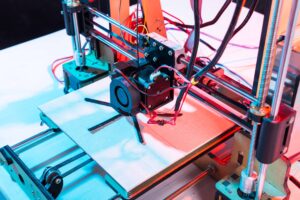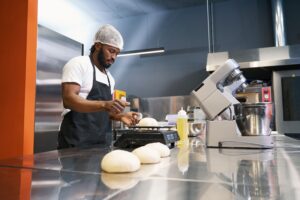The concept of 3D printed food, once the stuff of science fiction, is now becoming a reality. This innovative technology is changing the food industry, offering new possibilities for food production, personalization and sustainability. But is the future of 3D printed food already here?
The Rise of 3D Printed Food
3D printing technology, also known as additive manufacturing, involves creating three-dimensional objects from a digital file. In the context of food, this process uses edible ingredients instead of traditional printing materials. The technology has evolved significantly over the past decade, with various applications ranging from intricate dessert decorations to entire meals.
Pioneers in this field, such as Foodini and ChefJet, have developed machines capable of printing food items with remarkable precision and creativity. Foodini, for example, allows users to prepare dishes with fresh ingredients, which are then extruded through a nozzle to create intricate shapes and designs. This capability has opened up new opportunities for chefs and home cooks to experiment with presentation and flavor combinations.
Applications and Benefits
The potential applications of 3D printed food are vast and varied. In the culinary world, it allows for unparalleled customization and creativity. Chefs can design intricate patterns and structures that would be impossible to achieve by hand, adding a new dimension to fine dining. Additionally, the technology can help cater to specific dietary needs by precisely controlling ingredients and portion sizes.
Benefits of 3D Printed Food:
- Customization: Tailored meals for individual preferences and dietary restrictions.
- Sustainability: Potential to reduce food waste by using exact amounts of ingredients.
- Innovation: New culinary techniques and presentations.
3D printed food also holds promise for addressing global food challenges. Researchers are exploring the use of alternative ingredients, such as insect proteins and lab-grown meat, to create sustainable and nutritious food options. This approach could play a significant role in combating food scarcity and reducing the environmental impact of traditional agriculture.
Challenges and Future Prospects
Despite its potential, food 3D printing technology faces a number of challenges. The cost of food 3D printers and the complexity of the technology can be a barrier to widespread adoption. In addition, there are concerns about the nutritional value and safety of printed foods, especially when new ingredients are used.
The future of 3D printed food looks promising as it is constantly innovating and expanding its applications. The possibilities are vast, from high-end restaurants to space missions, where NASA is exploring the possibilities of 3D printing to provide astronauts with diverse and nutritious food.
